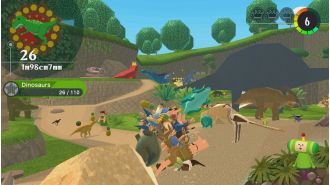Hyperlocal Mesh Networks
The NY Times has a post up this morning about a neighborhood in Brooklyn called Red Hook where they have built a hyperlocal mesh network to service the entire neighborhood, from housing projects to townhouses.
Red Hook is a cool place. We were there last night to sample Hometown Bar-B-Que‘s massive beef ribs and a bunch of other great stuff. Red Hook is isolated from the rest of Brooklyn by the BQE Expressway and sits right on NY Harbor. It has a collection of different housing situations, from single family homes, to factory lofts, to housing projects. The only public transportation in Red Hook are bus lines into downtown Brooklyn and the occasional Ikea Ferry. It’s a neighborhood all to itself in many ways.
Red Hook was badly flooded in Hurricane Sandy and living there in the weeks after the storm was dicey. The neighborhood has bounced back strongly however and there are construction jobs seemingly on every block. In the wake of Sandy, a local group called the Red Hook Initiative led an effort to build a hyperlocal mesh network throughout Red Hook.
For those that don’t know the difference between a mesh network and a traditional network, the big thing to focus on is that the nodes (think of them like public wireless access points) talk to each other and form a network that operates even if its is not connected to the public Internet. Most mesh networks are connected to the public Internet, but if that connection goes down, the local mesh continues to work. In Red Hook that means that you could make voice calls (over IP) from your housing project to the local hardware store to see if its open. Or you could email a friend who lives in the neighborhood.
If every neighborhood in Brooklyn had a public mesh like Red Hook has, and if they were all meshed with each other, then Brooklyn would have its own local Internet of sorts.
At USV, we think this is an important part of how we (meaning the entire world) get a mobile Internet that is not controlled by the large mobile telcos. We have made one investment in this area (which I don’t think we have announced yet) and we are looking to find other smart ways to invest in this trend.
But the biggest investments that will be made in mesh networking will be made by local groups like Red Hook Initiative. It is not terribly expensive to construct one of these mesh networks and every neighborhood ought to be thinking of doing something like this. If everyone did this, the mobile Internet would look a lot different than it does today.






